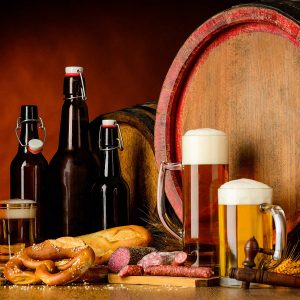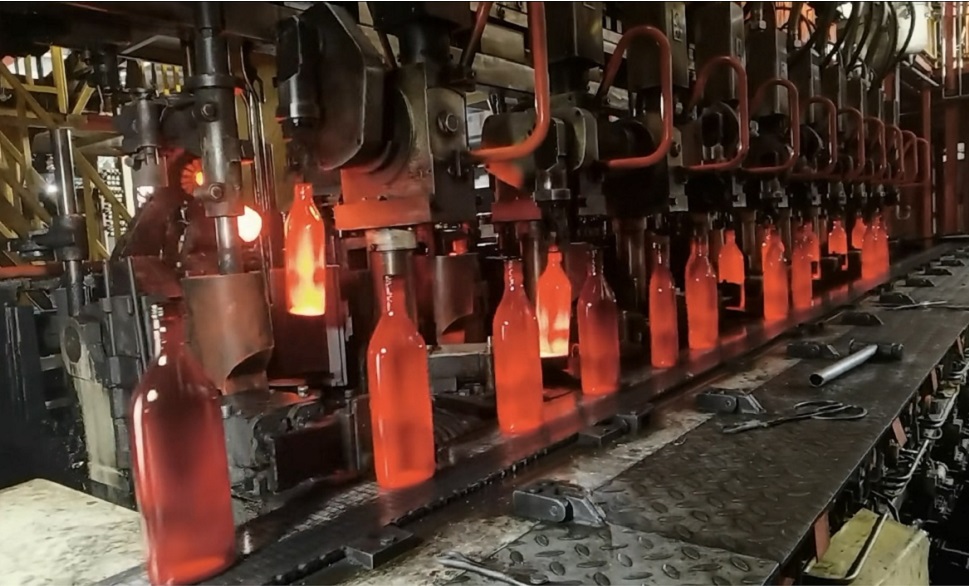Are all types of glass bottle made from glass bottle factory recyclable?
Everyone needs to help cut down on the resource they use. It’s also important to reuse items when you can. When things can’t be reused, they should be recycled. That way, they can be used over and over again.
Can everything be recycled? No, not all things can be recycled. But you might be surprised to learn how many things CAN be recycled. You may already know about aluminum cans and plastic bottles. Did you know you can also recyle glass?
Glass can be recycled to make all sorts of things. Recycling glass really helps the planet. Making new products from recycled glass causes less air and water pollution. It also uses less energy than making new glass. When glass arrives at a recycling plant, people and machines sort it by color. Similar colors of glass must be recycled together. That way, recycled products are as pure as possible. This makes them stronger and less likely to break.
Glass manufacturers mix cuttet with other materials like limestone, sand, and soda ash. Then they heat it to over 2600º F. This makes liquid glass, which can then be poured into a mold. There, it cools and forms a finished glass product.
How is the glass recycled?
Once glass is collected and taken to be reprocessed, it is:
crushed and contaminants removed (mechanised colour sorting is usually undertaken at this stage if required)
mixed with the raw materials to colour and/or enhance properties
melted in the furnace
moulded or blown into designed glass bottle.
Most recycled glass is used to make new glass containers, such as jars and bottles. However, recycled glass can also find its way into all sorts of other products. That includes fiberglass insulation, ceramic tiles, and a variety of construction products.
With everyone doing their part, recycling glass can make a huge difference for the planet! The production and use of glass has a number of environmental impacts.
New glass is made from four main ingredients: sand, soda ash, limestone and other additives for colour or special treatments. Although there is no shortage of these raw materials as yet, they all have to be quarried, using up natural resources and energy for extraction and processing.
Glass is 100% recyclable and can be endlessly recycled with no loss of quality. Therefore by simply recycling our glass we can reduce non-renewable fossil fuel usage and also reduce the emissions of process CO2 from the carbonate raw materials such as limestone. Each tonne of cullet added to the furnace saves 1.2 tonnes of raw materials. Each time one tonne of glass is recycled, about 580kg CO2 is saved throughout the supply chain, air pollution is reduced by 20% and water pollution cut by 50%!
Recycled glass can be used to make a wide range of everyday products and some that are completely unexpected, including:
new bottles and jars
glass wool insulation for homes, which also helps with energy efficiency, and
water filtration media.
During the glass manufacturing process, extra raw materials can be added to give the glass a particular colour or special qualities.
The extra raw materials that can be added are:
iron for a brown or green colour
cobalt for blue
alumina for durability
boron to improve resistance to heat or cold.
What is difference between brimful capacity and standard capacity
Brimful capacity
The brim-full capacity of a jar or bottle is the maximum capacity of the container to hold liquid. Brim-full capacity of a jar with metal lug cap or screw cap have the capacity to hold liquid until the very top (or brim) of the jar or bottle. Please consider expansion of your product.
Some of the jars e.g. pressed jar have different meaning for brim-full capacity because it requires space for the cap/cork to be placed within the jar when it is capped on. Therefore the brim-full capacity is the maximum capacity that includes caps to be placed into jars and not to the brim level of the jar.
Standard Capacity
Standard capacity is a normal volume for commercial use and it is normally up to the shoulder level of a jar or bottle.
How are these measurements useful, you may ask? Imagine you are reviewing a 510ml glass bottle but would need a bottle to fill 500ml of liquid inside. So the standard capacity is only 480ml. But if the bottle’s technical drawing states the bottle has an actual overflow capacity of 510ml, you can potentially fill 500ml of liquid in this “510ml” glass bottle without any issue.
Be careful, however, as these measurements are actually two very different numbers, and if they are confused, can lead to incorrect fill of your bottle and error in label claim.
We would recommend that “samples” are ordered prior to you placing orders to ensure the true capacity and weight of your product after filling. Bear in mind that the density of the product will also effect the fill weight and finished jar/bottle weight.
Specification sheets are available for you to download, if you cannot see the Brim-full / Fill weight, then please ask for a more detailed drawing.
Why are most wine bottle tinted

Red Wine and Dark Green Bottles
There are several reasons why red wine is bottled in dark colored glass. First of all, wine is not to be exposed to any kind of light for long periods of time, whether it is sunlight or incandescent light. Light increases wines likelihood to oxidize, causing it to breakdown, in turn affecting the color, aroma, and taste of the wine. Oxidized wine takes on a vinegary taste and loses its depth of flavor.
This Oxidation process caused by UV rays is much more common among red wines, therefore enforcing why the green glass bottles were born. Since red wines are often left to age, the dark green bottles play an important part in preserving their quality along with temperature consistency. Another reason dark bottles are used for red wines is so the consumer cannot judge the wine based solely on the color. A final reason some winemakers have proposed is that dark glass helps hide the natural sediments that come in them.
White Wines and Light Colored Bottles
White wines and Rosés on the other hand are often bottled in clear, amber, or generally lighter colored bottles. White wines are often consumed younger than red wines and are stored in refrigerators, which keep out light as well. Just as the winemakers use dark green glass to disguise the color of the red wine, Rosés purposefully use clear glass to accentuate the visually appealing color. But just like white wines, Rosés also aren’t meant to age for an extensive period of time.
It is likely the Champagne producers have done the most research on the consumer’s impression of the wine’s color. In fact, Roederer’s Cristal Champagne is bottled in clear glass but is wrapped in orange tissue to filter out the ultra-violet light and mask the wine’s color.
Since some wine bottles nowadays are bottled in UV protected glass the colors used are less necessary. But are rather continued as a tradition. Also, it has been researched that 70 to 90 percent of wine purchased in America is consumed within 24 hours of buying. All in all, we know that what is inside the bottle is what truly matters!
Why are most beer bottles brown?

Beer has been around for quite a while – some of the first to brew it was the ancient Egyptians thousands of years ago. However, bottled beer only started to be a thing in the 19th century, when brewers realised glass would keep it fresh.
Beer was stored in clear glass and when left in the sun for too long, it started to smell “skunky” – like a skunk, literally. This was because the clear glass allowed UV rays to penetrate the beer and alter the flavour.
The solution was turning bottles brown, a darker colour which would block out the rays. After World War II, green bottles also became popular due to a shortage of brown glass.
These days, brewers can apply UV protected coats to glass to preserve the taste.

